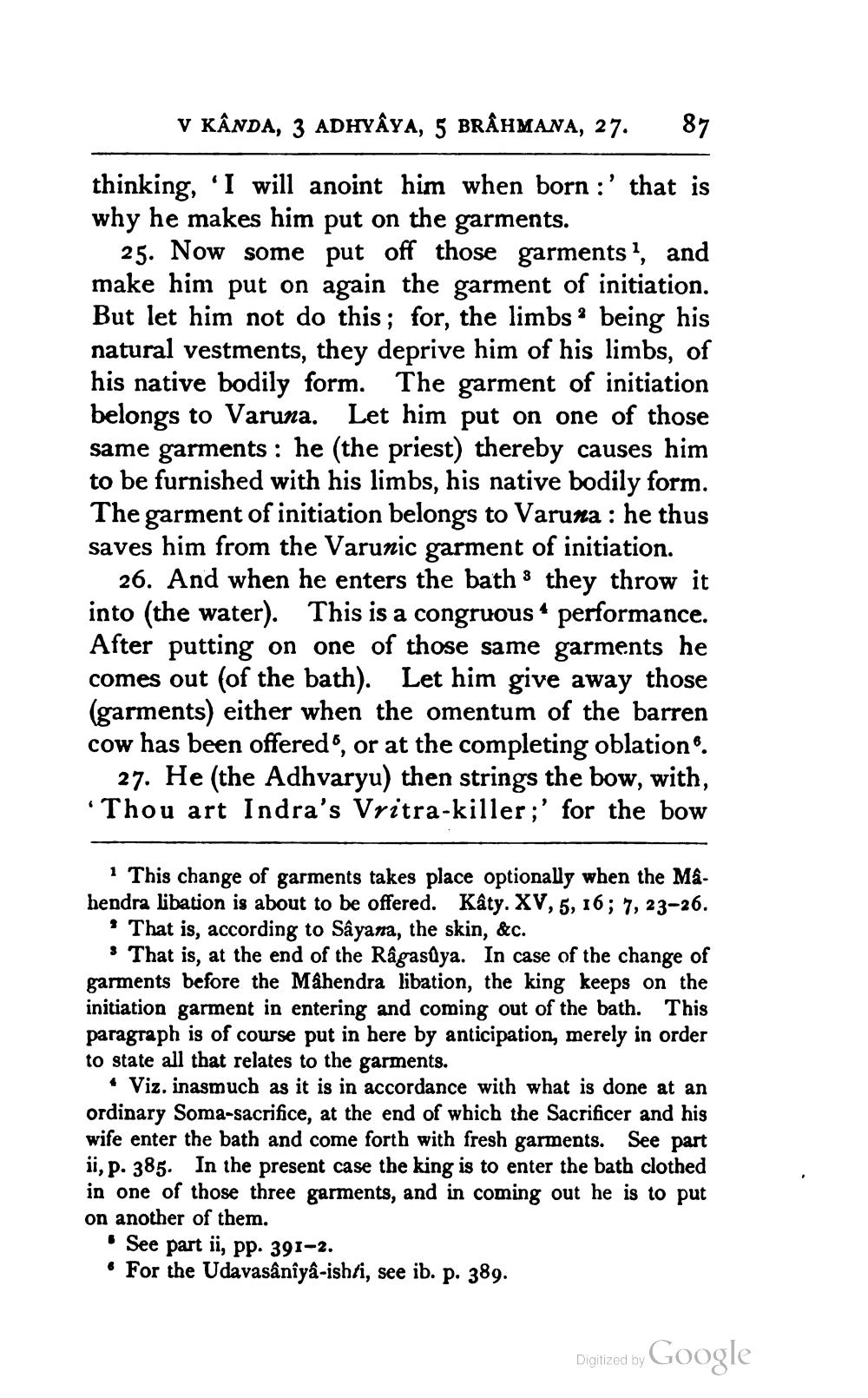________________
V KÂNDA, 3 ADHYÂYA, 5 BRÂHMANA, 27.
87
thinking, 'I will anoint him when born:' that is why he makes him put on the garments.
2
25. Now some put off those garments1, and make him put on again the garment of initiation. But let him not do this; for, the limbs being his natural vestments, they deprive him of his limbs, of his native bodily form. The garment of initiation belongs to Varuna. Let him put on one of those same garments: he (the priest) thereby causes him to be furnished with his limbs, his native bodily form. The garment of initiation belongs to Varuna: he thus saves him from the Varunic garment of initiation. 26. And when he enters the bath they throw it into (the water). This is a congruous performance. After putting on one of those same garments he comes out (of the bath). Let him give away those (garments) either when the omentum of the barren cow has been offered, or at the completing oblation®.
3
4
27. He (the Adhvaryu) then strings the bow, with, 'Thou art Indra's Vritra-killer;' for the bow
1 This change of garments takes place optionally when the Mâhendra libation is about to be offered. Kâty. XV, 5, 16; 7, 23-26.
* That is, according to Sâyana, the skin, &c.
That is, at the end of the Râgasûya. In case of the change of garments before the Mâhendra libation, the king keeps on the initiation garment in entering and coming out of the bath. This paragraph is of course put in here by anticipation, merely in order to state all that relates to the garments.
• Viz. inasmuch as it is in accordance with what is done at an ordinary Soma-sacrifice, at the end of which the Sacrificer and his wife enter the bath and come forth with fresh garments. See part ii, p. 385. In the present case the king is to enter the bath clothed in one of those three garments, and in coming out he is to put on another of them.
See part ii, pp. 391-2.
• For the Udavasânîyâ-ishti, see ib. p. 389.
Digitized by
Google




